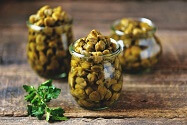What Are Capers?
Capparis spinosa L., commonly known as Capers, is a perennial, semi-shrubby vine in the Capparaceae family. Native to arid regions in Western or Central Asia, it thrives in diverse environments, including the Mediterranean, Spain, and areas in China such as Xinjiang, Gansu, and Tibet.
Video Explanation:What are Capers?
This resilient plant exhibits a sprawling growth pattern with extensively branched stems. Its leaves, characterized by a leathery texture, vary from round to inverted egg-shaped or elliptical. The flowers are adorned with a predominantly white corolla, while the fruit is ellipsoidal in shape, containing red pulp and dark brown seeds. Flowering occurs from early May to October, with fruit reaching maturation within 30 days of flowering. This makes caper plants a fascinating species for those asking, "What are capers?"
Capers Growing Conditions
Thriving in harsh environments, caper plants are a prime example of nature's adaptability. They flourish in arid climates with sandy winds and nutrient-poor soils, thriving in rocky low mountains, hilly slopes, and gravelly desert terrains, though they are less suited for sandy soils. For those exploring *what are capers*, it's worth noting that their resilience makes them ideal for challenging ecosystems. According to the International Union for Conservation of Nature (IUCN) Red List, caper plants are listed as "Least Concern" (LC). The plant primarily propagates through seed reproduction, ensuring its widespread growth even in the toughest conditions.
Capers, widely known for their culinary versatility, shine as a key ingredient in various dishes. Their tender shoots, leaves, and flower buds, when cleaned and soaked in vinegar, are perfect for stir-frying and seasoning. Commonly used in European cuisine, capers bring a distinct flavor to pickled dishes, stir-fried recipes, and omelets. If you've ever wondered *what are capers*, their role in cooking is just one facet of their utility.
Beyond the kitchen, caper plants offer significant ecological benefits. They contribute to water conservation, form natural windbreaks, and play a critical role in stabilizing desert ecosystems. Known for their exceptional drought resistance, caper plants excel as sand-fixing vegetation and provide valuable forage for livestock. For those delving deeper into *what are capers*, their ecological importance is a testament to their versatility and environmental value.
Characteristics Of Capers
Capparis spinosa L., commonly known as caper, is a perennial, semi-shrubby vine with an inverted conical shape that has intrigued many who ask, "What are capers?" Growing to a modest height of 30-50 centimeters, these resilient plants form dense clusters with a crown span ranging from 4 to 25 square meters. Unlike most shrubs, the mature caper plant lacks a prominent main stem, showcasing an abundance of branches that sprawl horizontally or ascend at an oblique angle, extending up to 2-3 meters. Known for their deep-rooted tendencies, caper plants feature a sparse horizontal root system complemented by a well-developed primary root that can penetrate up to 3 meters deep within the first year, enabling them to thrive in harsh environments. The leathery leaves vary in shape—round, inverted egg-shaped, or elliptical—and are arranged singly and oppositely, measuring 1-5 centimeters in length and 1-3.5 centimeters in width. Many leaves terminate in thorn-tipped apices, with stipules modified into thorn-like structures, highlighting the plant's adaptations to arid conditions.
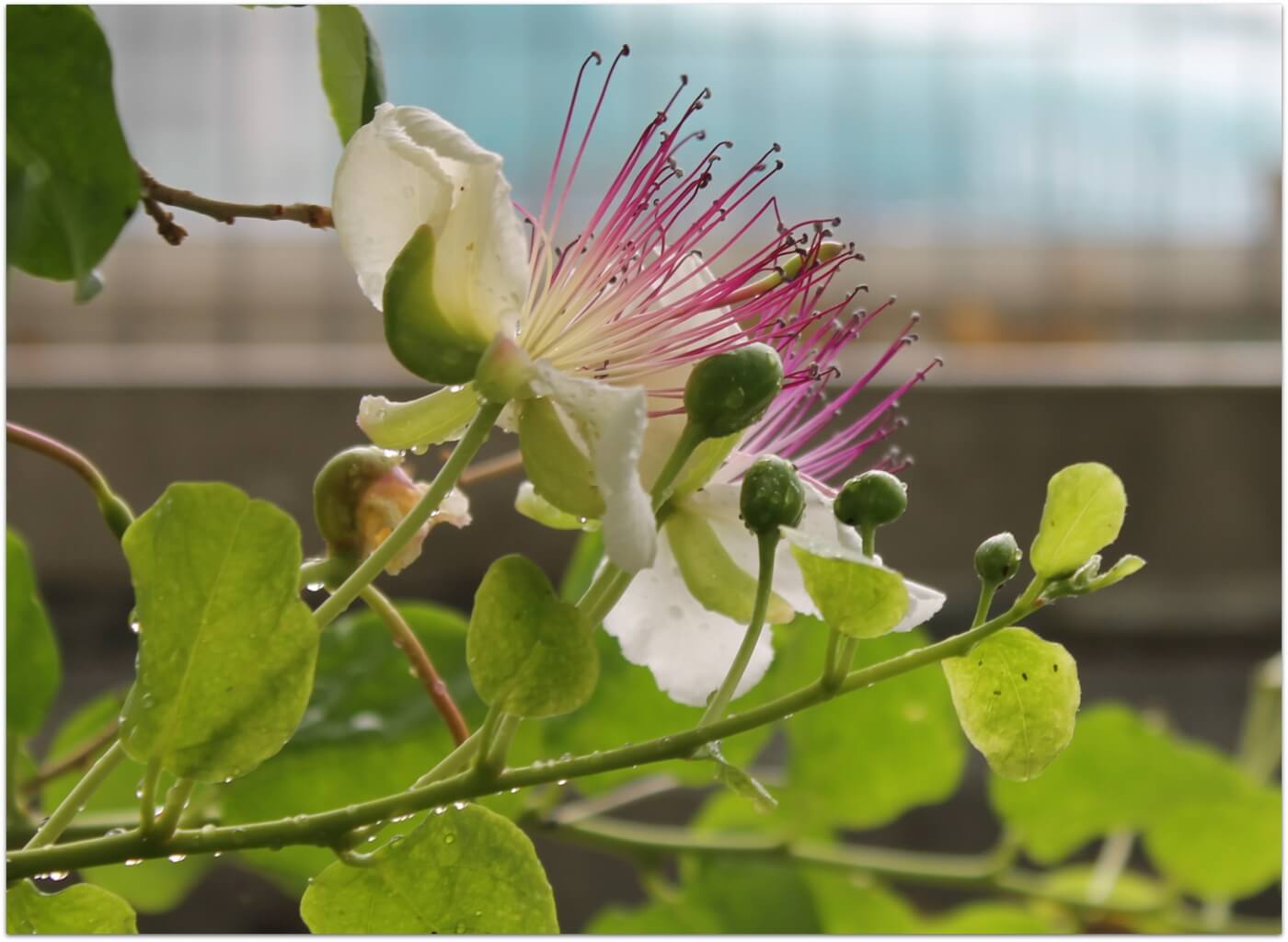
Capers Flowers Pictures
In the axils of the leaves, caper plants produce relatively large flowers, which play a critical role in understanding "What are capers?" These include both male and bisexual flowers, organized within a characteristic male-dominant sexual system. The corollas, with diameters of 4-8 centimeters, display striking hues of white or pale red, though white is predominant. These blossoms not only contribute to the plant's reproductive success but also add ornamental value to their natural habitats. The fruit, resembling an ellipsoidal shape akin to a miniature watermelon, has a glossy green surface. When fully mature, the fruit measures approximately 2-4 centimeters in length and 1.5-3 centimeters in width, splitting open naturally to reveal a vibrant red pulp. Within this pulp lie kidney-shaped seeds, about 3 millimeters in diameter, with a dark brown color and a weight of approximately 3.1 grams per thousand seeds. For those exploring the question, "What are capers?" understanding the fruit's unique characteristics is key.
Caper plants are deciduous shrubs during winter, undergoing a seasonal transformation where the above-ground stems and leaves wither entirely. The sand-buried portion of the plant survives the harsh winter, allowing new shoots to emerge in the following year. This cyclical resilience not only ensures the plant's survival but also contributes to its ecological significance. Whether you're asking "What are capers?" in the context of culinary uses or ecological value, their fascinating adaptations and features make them a remarkable species to explore.
What Are Capers Used For
Versatile Capers: A Culinary Delight: Capers, those flavorful buds packed with a distinct tang, are a staple ingredient for anyone curious about "What are capers?" In the culinary world, they shine in classic Italian dishes like Puttanesca and Chicken Piccata, adding a vibrant zest to every bite. Their popularity extends to Spanish tapas, where capers complement an array of bold flavors. In North America, capers frequently grace New York-style bagels paired with smoked salmon, creating a quick yet luxurious dinner option. Their adaptability knows no bounds—they elevate nearly any fish dish with their ability to enhance natural flavors. Whether sprinkled on seafood platters or stirred into sauces, capers are indispensable for crafting recipes with depth. Even in beverages like a zesty Bloody Mary, capers bring an unexpected twist, proving their versatility across culinary creations. If you’ve ever wondered, "What are capers used for?" their role in fish pairings and beyond showcases their unmatched potential.
Beyond the Kitchen: Medicinal and Agricultural Significance: For those exploring "What are capers?" beyond their culinary appeal, their medicinal and agricultural benefits are equally noteworthy. As a recognized traditional Chinese herb, capers have been utilized in remedies for conditions such as rheumatoid arthritis and to promote overall health and well-being. Their nutritional composition, rich in beneficial compounds, supports their longstanding role in restorative practices. Agriculturally, capers offer significant advantages. During their early flowering period, caper plants provide nutritious forage for livestock, supplying essential protein and fats for optimal health. Furthermore, their unique ecological adaptations make them invaluable in arid regions. These hardy plants help reduce wind speed, resist sandstorms, and prevent soil erosion, contributing to environmental stability. For those seeking to answer the question, "What are capers?" their diverse uses in medicine, agriculture, and ecology illustrate their remarkable importance.
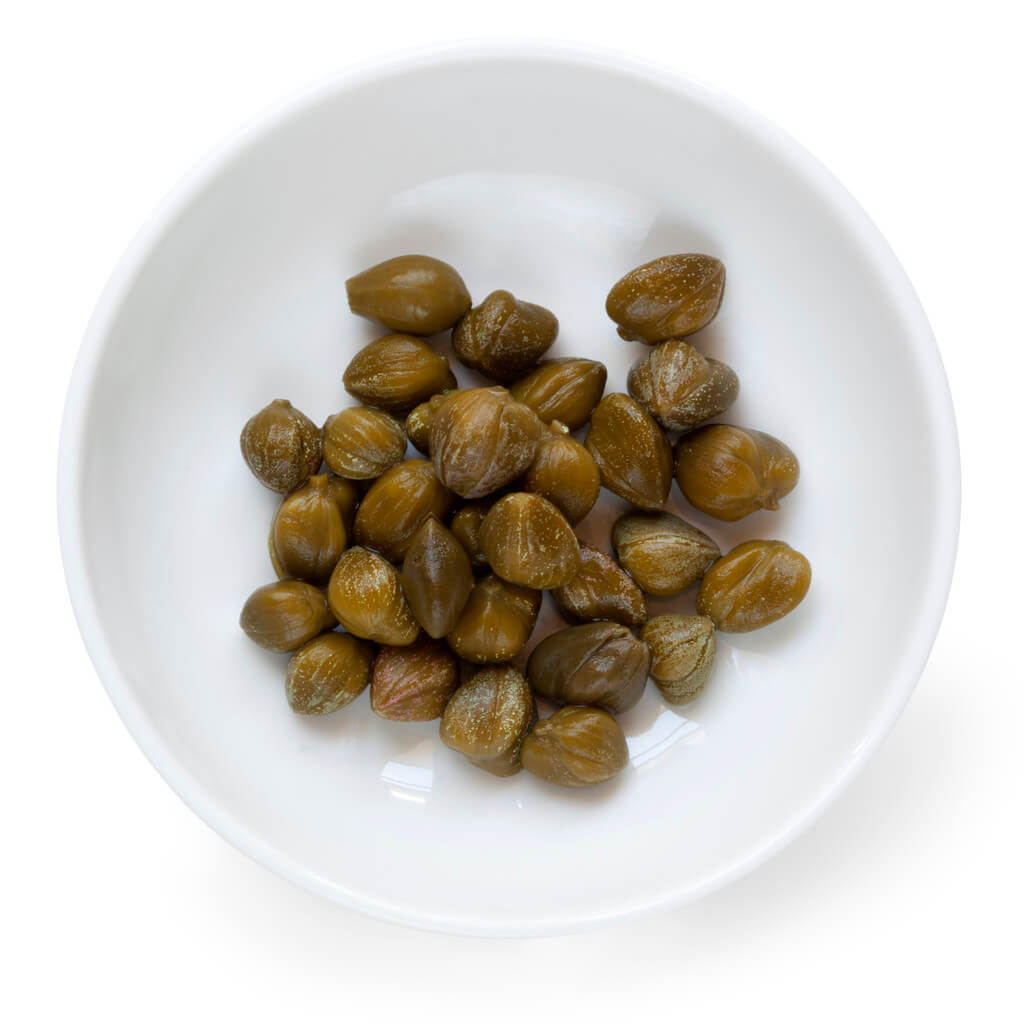
used for in cookin pictures
Capers: A Gourmet Staple with Global Appeal: Capers, often regarded as a culinary gem, are much more than a garnish—they're a gourmet staple with worldwide recognition. For those wondering, "What are capers?" their role in Mediterranean cuisine provides a clear answer. These tiny, pickled flower buds bring a distinctive salty, briny, and lemony flavor to a wide array of dishes. They shine in seafood delicacies like grilled fish, pasta sauces, and iconic recipes such as Chicken Piccata, where their tangy profile balances rich, savory flavors. In the United States, capers elevate the classic combination of bagels, cream cheese, and smoked salmon, transforming it into a beloved breakfast or brunch favorite. Their versatility doesn't end there—capers are a popular choice for appetizer platters and lend a sophisticated twist to cocktails like the Bloody Mary. If you're exploring "What are capers?" in the context of global cuisines, their unmatched ability to enhance flavors makes them indispensable.
Capers vs. Caperberries: Unlocking Culinary Distinctions: Understanding the difference between capers and caperberries is essential for culinary enthusiasts asking, "What are capers?" Capers are the immature flower buds of the caper plant, prized for their tangy and slightly spicy flavor, while caperberries develop if the buds are left to mature. Resembling large olives, caperberries are characterized by their elongated stems, tiny seeds similar to those in kiwifruit, and a softer texture. Unlike capers, caperberries lack the signature spicy kick and are best suited for milder flavor profiles. Both capers and caperberries undergo a pickling process, but they serve distinct purposes. Capers are irreplaceable in recipes demanding their bold, briny heat, such as sauces or dressings, while caperberries make an excellent addition to charcuterie boards or as garnishes for cocktails like the classic Bloody Mary. Whether you're savoring capers or caperberries, understanding their unique characteristics deepens your appreciation for these culinary delights.
What Are Capers Food
Culinary Versatility of Capers:
- Classic Tartar Sauce Upgrade: Take your tartar sauce to the next level by incorporating capers. Mix these tangy buds with white wine vinegar, Dijon mustard, honey, lemon juice, and finely chopped celery root for a condiment bursting with flavor. Perfectly paired with seafood, this enhanced tartar sauce answers the question, "What are capers good for?" in the most delicious way.
- Salmon Sauce Extravaganza: Wondering "What are capers used for?" Discover their magic in a decadent salmon sauce. Blend melted butter, fresh lemon juice, and minced capers to create a mouthwatering topping for grilled salmon. This simple yet elegant combination transforms your dish into a culinary masterpiece that highlights capers' unique zest.
- Pizza Perfection with Capers: Elevate your pizza game with the addition of capers. These versatile gems pair beautifully with mayonnaise, olive oil, anchovies, tuna, and lemon juice to create a distinctive Italian-inspired tomato sauce. Their briny kick enhances every bite, proving why capers are a must-try topping.
- Caper-infused Caesar Salad Dressing: Bring new life to your Caesar salad by incorporating capers into the dressing. Mix egg yolks, olive oil, anchovies, capers, and lemon juice for a zesty and creamy blend. This innovative twist not only elevates a classic recipe but also showcases "What are capers?" in a flavorful and memorable way.
- Culinary Creativity with Capers and Pasta: Transform your pasta dishes by exploring "What are capers?" in versatile applications. Combine capers with capellini, olive oil, roasted garlic, and cherry tomatoes for a light yet delectable dish. Their tangy flavor enhances every ingredient, making them the star of this simple yet satisfying meal.
- Delicious Garlic Caper Butter for Grilled Fish: Indulge in a luxurious garlic caper butter sauce that brings out the best in grilled fish. Melt butter with minced garlic, fresh lemon juice, and capers to create a rich, savory accompaniment. This sauce not only complements the fish's natural flavors but also answers "What are capers used for?" with elegance and taste.
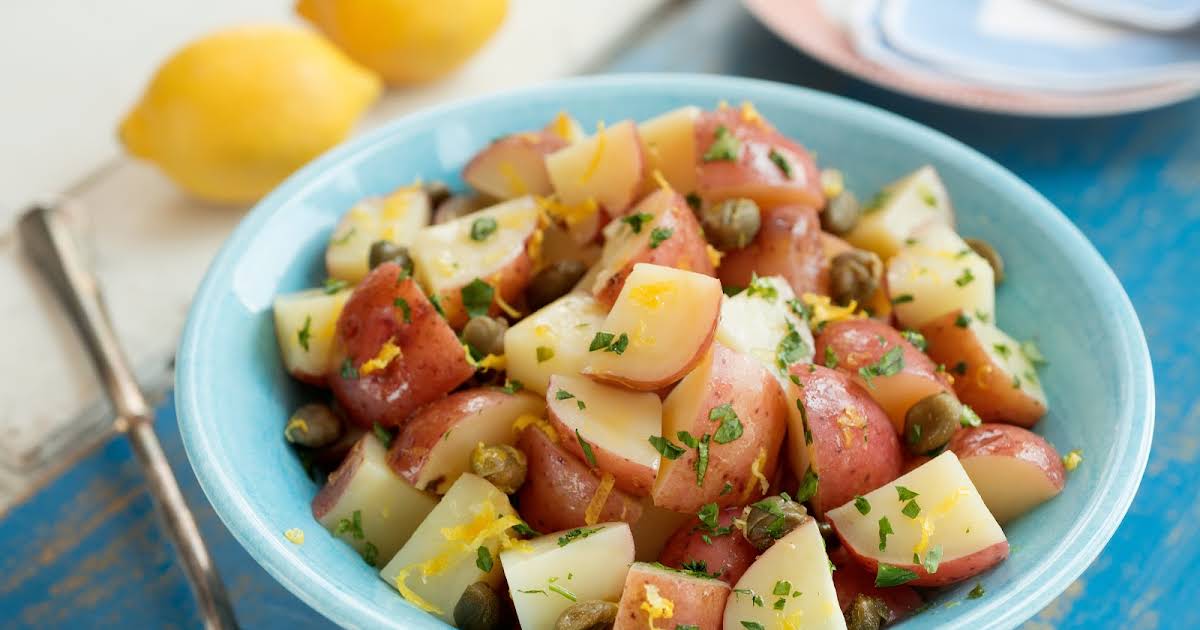
Prepare Capers
How to Prepare Capers:
- Rinse and pat dry the capers before use to ensure their pure, briny flavor shines in your dishes. For those wondering "What are capers?" this simple preparation step highlights their versatility.
- How to Cook with Capers: Discover the endless possibilities of "What are capers used for?" by experimenting with recipes like tangy salmon sauces, flavorful pasta dishes, or creative pizza toppings. Their ability to enhance the natural flavors of ingredients makes them a star in any culinary creation.
- Caper Storage Tips: Preserve the freshness of your capers by storing them in a cool, dark place. Once opened, refrigerate them in their brine to prevent spoilage and maintain their signature tang. Proper storage ensures your capers are ready to answer the question, "What are capers good for?" whenever inspiration strikes.
- Availability: Wondering "What are capers and where can I find them?" Capers are readily available year-round, making it easy to incorporate their distinct flavor into your meals at any time.
- Selecting the Best Capers: For those curious about "What are capers?" selecting the right ones is key. Opt for slightly larger capers for a well-balanced flavor profile. Choose from preservation methods like salt, wine vinegar, brine, or olive oil to find the perfect match for your culinary preferences.
- Capers vs. Caperberries: Unlocking Culinary Distinctions: Understanding the difference between capers and caperberries is essential for culinary enthusiasts asking, "What are capers?" While capers are tangy, immature flower buds, caperberries resemble large olives with a milder and sweeter flavor. Both add unique elements to dishes, offering distinct possibilities for creative cooking.
- Culinary Adventure with Capers: Embark on a flavorful journey with capers, uncovering their unique flavor profile and the variety of dishes they enhance. From seafood staples like bagels with smoked salmon to inventive pasta recipes, capers bring a delightful and distinctive touch. Answering "What are capers?" has never been more delicious as you explore their many culinary roles.
What Are Capers Good For
While capers might appear as a small addition to your favorite dinner dish, their impact on flavor and nutrition is undeniably significant. These tiny, pickled flower buds pack a mighty punch of taste and health benefits, earning their place in cuisines worldwide. For those wondering What Are Capers, their unique qualities extend far beyond their size.
- Known for their lemony and salty profile, capers play a pivotal role in classic recipes like chicken piccata and smoked salmon sauce. Their flavor varies based on preservation methods—whether in brine, salt, or vinegar—each contributing a distinct tanginess to elevate even the most refined dishes.
- Derived from the immature buds of the caper bush, capers are deeply rooted in Mediterranean culinary traditions. Thriving in regions ranging from Morocco to Australia, they carry a rich history, even appearing in the Sumerian epic "Gilgamesh" around 2000 BCE. Their versatility continues to make them a cherished ingredient worldwide.
- It’s important to distinguish capers from caperberries. While both grow on the same plant, capers are the smaller, pickled buds, whereas caperberries are larger, olive-like fruits containing seeds. If left unharvested, caper buds naturally mature into caperberries, which have a milder flavor profile.
Health Benefits:
(Please note: Health benefits have not been rigorously confirmed and are provided for informational purposes only.)1. Cancer Prevention:
For those asking, "What are capers good for?" their potential health benefits include aiding cancer prevention. When paired with poultry or red meat, capers may reduce the production of harmful by-products linked to cellular damage and cancer risk. Even in small quantities, their role in minimizing oxidative stress makes them a smart choice for meat-heavy diets.
2. Reduced Risk of Arrhythmia:
Capers are rich in quercetin, a flavonoid that supports the potassium ion channels in the KCNQ gene family. Dysfunction in these channels is associated with conditions like arrhythmia. By promoting the opening of these channels, quercetin in capers may contribute to healthier heart function and reduced risk of arrhythmia.
3. Alzheimer's Prevention:
Quercetin, abundant in capers, is a powerful antioxidant and anti-inflammatory agent. Regular consumption of capers may help lower the risk of Alzheimer's disease by reducing cellular damage and inflammation, key factors in neurodegenerative diseases. This potential benefit highlights yet another reason to explore "What are capers" and incorporate them into your diet.
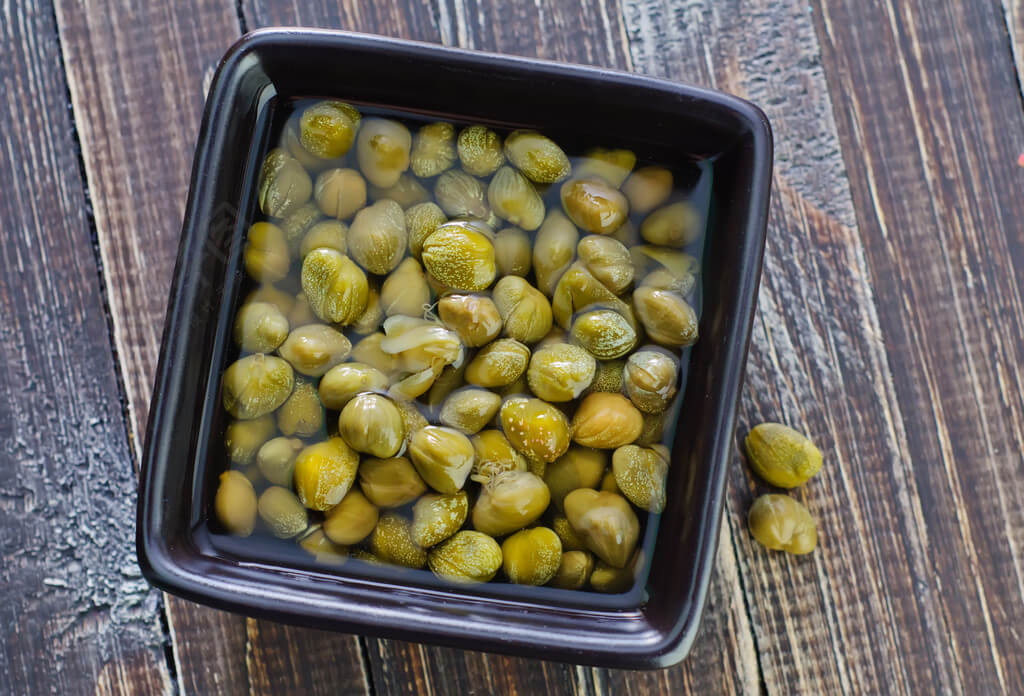
The Remarkable Benefits of Capers in Your Diet
4.Nutrition:
Capers are not just flavor enhancers; they are nutritional powerhouses, providing various antioxidants crucial in combating oxidative stress and potentially reducing the risk of certain cancers.
Capers Also Serve As Sources Of:
Nutritional Content (Per Tablespoon, Drained):
Depending on their preparation and storage, capers can be a significant source of sodium. Therefore, it's advisable to consume them in moderation as a flavorful addition to your nutritional intake.
With their intense saltiness and robust flavor, Capers stand as pillars in Mediterranean cuisine, elevating various dishes with their distinctive taste.
In conclusion, capers, the tiny but robust flower buds, not only add a burst of flavor to your meals but also bring a myriad of health benefits to the table. Incorporate them wisely into your culinary adventures for a delightful and health-conscious dining experience.
What Are Capers In Cooking
Capers, the small, briny flower buds, have earned their place as a versatile ingredient in various cuisines, especially Mediterranean and Italian. Their distinct tart, salty, and slightly floral flavor can transform a simple dish into something extraordinary. These little buds, harvested from the caper bush (Capparis spinosa), are commonly preserved in salt or brine, which intensifies their sharp, tangy taste.
Capers are most famously used in seafood dishes such as baked fish and pasta sauces like puttanesca. Their briny and tangy profile pairs beautifully with rich and savory ingredients, cutting through the richness of butter-based sauces in classic recipes like chicken piccata or pork chop piccata. In fact, capers are an essential ingredient in these dishes, providing that perfect balance of flavor. When finely chopped, they serve as a key component in tapenade, sauces, and dressings, adding a savory, briny backbone to the dish.
In addition to being used in savory dishes, capers are also perfect for garnishing. Their unique flavor makes them a great addition to bagels with cream cheese and lox or as a topping for salads. When fried, capers develop a crispy texture, offering a delightful crunch and flavor boost when sprinkled over dishes like grilled vegetables, fish, or roasted meats.
Capers come in various sizes and varieties, including nonpareils, which are the smallest and most prized for their delicate flavor and texture. These tiny capers are often used whole or finely chopped to preserve their subtle fragrance. Larger capers, like grusas, offer a more intense, acidic flavor, so they should be used more sparingly, depending on the dish's requirements.
In addition to their culinary contributions, capers are known for their health benefits. They contain essential vitamins and minerals such as vitamins A, E, and K, as well as copper, iron, and magnesium. However, due to their preservation in brine, they are high in sodium, so it's important to use them in moderation, particularly for those watching their salt intake.
Overall, capers are a must-have ingredient in the kitchen. Their versatility and unique flavor make them indispensable in a wide range of dishes, from seafood and pasta to garnishes and dips. Whether you're using them to add depth to a savory sauce, create a bright contrast in a rich dish, or simply enjoy their tangy bite, capers will undoubtedly elevate your cooking.
Types of Capers and Their Flavor Profiles
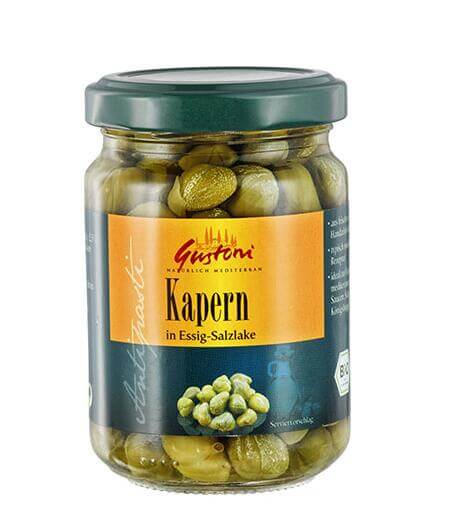
Brined Capers
Brined capers are preserved in a mixture of water, vinegar, and salt, making them one of the most widely used types. Their pickling process gives them a bold, tangy flavor with a slight crunch. To achieve the best balance of taste, rinse brined capers before adding them to dishes. Their robust flavor complements sauces, marinades, and Mediterranean pasta dishes, making them a kitchen staple for those who love experimenting with bold flavors.
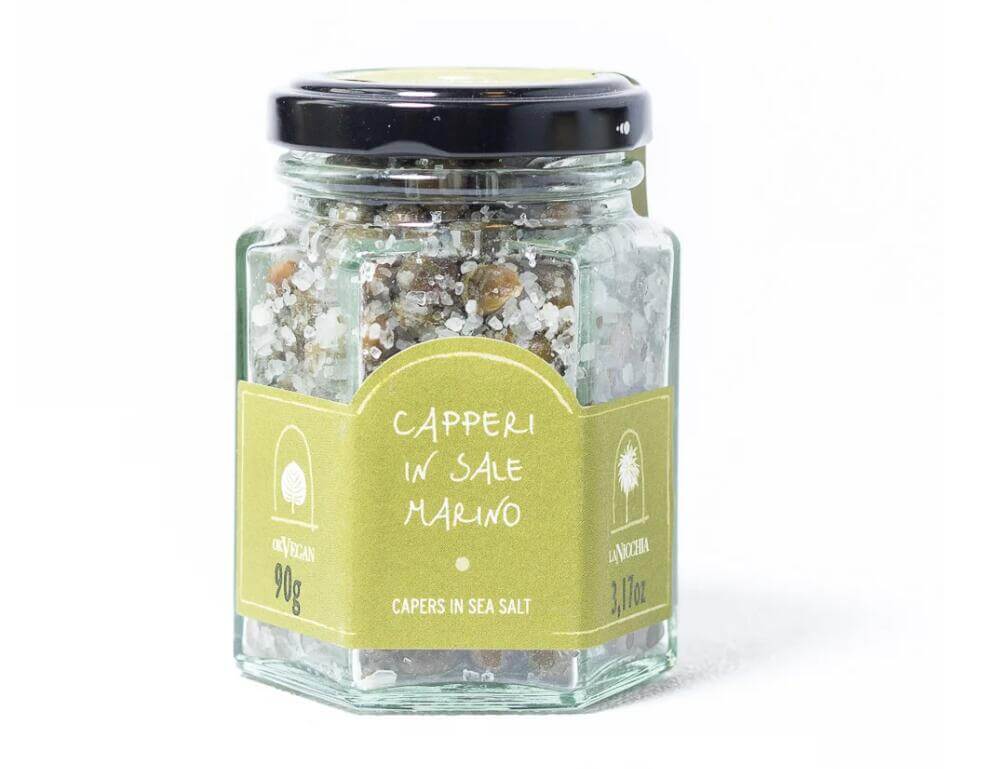
Salt-Packed Capers
Preserved in layers of coarse salt, salt-packed capers boast a concentrated flavor profile. This method draws out moisture while intensifying their natural tang. Thorough rinsing is necessary to remove excess salt, allowing their rich flavor to shine without overpowering dishes. With a softer texture, these capers are prized in Mediterranean recipes, enhancing salads, dressings, and roasted vegetables with their distinctive taste.
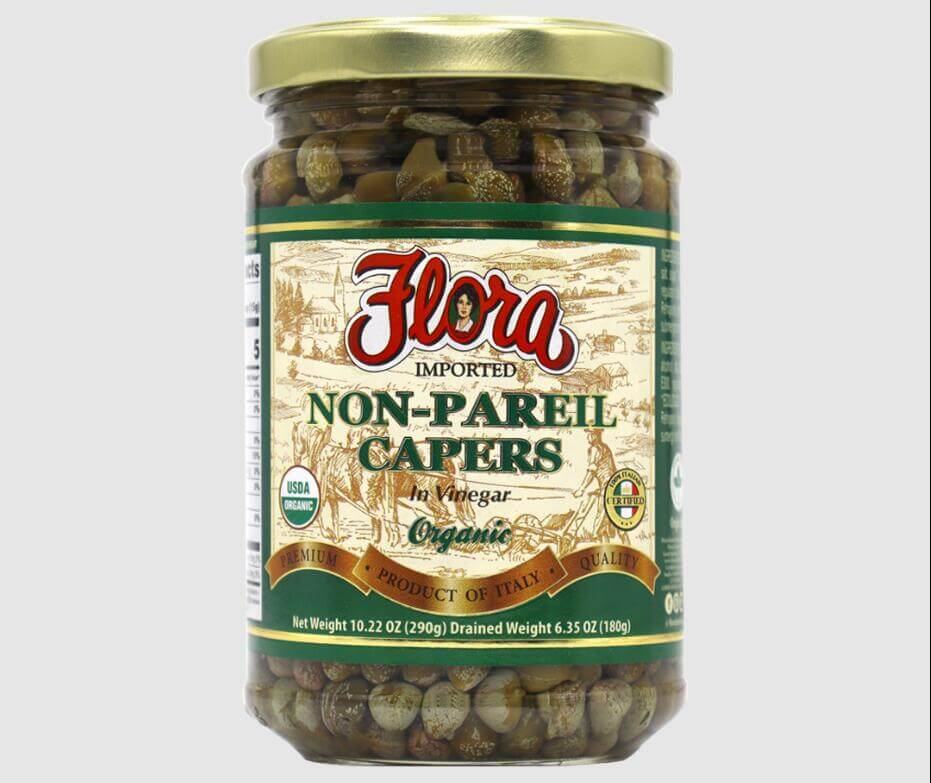
Nonpareil Capers
Nonpareil capers are often referred to as the "gold standard" of capers due to their petite size and refined flavor. Harvested at their youngest stage, these capers are delicately briny with subtle floral undertones. Their elegant taste makes them ideal for light sauces, vinaigrettes, and upscale garnishes. Whether used whole or finely chopped, Nonpareil capers lend sophistication to any dish, from gourmet salads to intricate pasta creations.
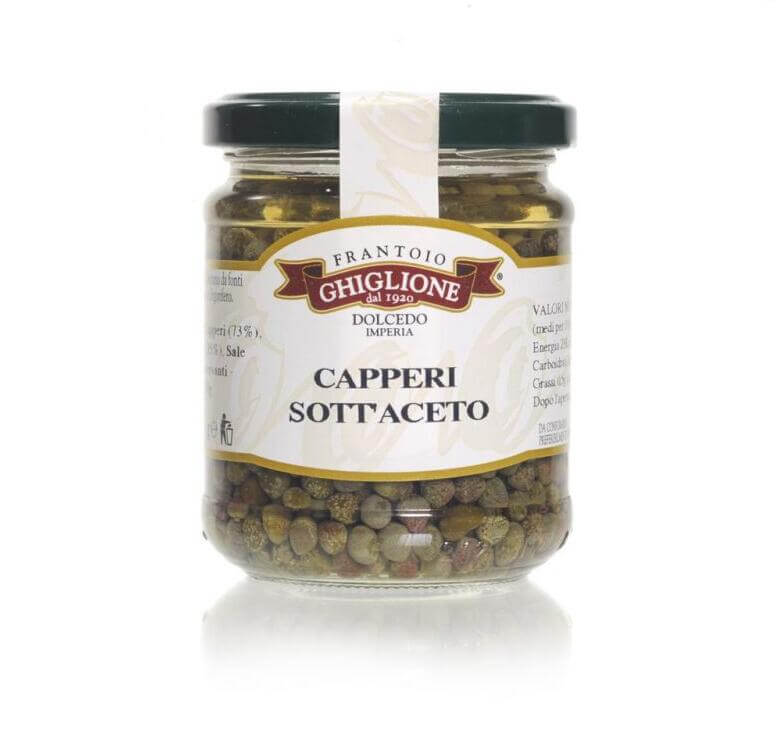
Vinegar-Packed Capers
Vinegar-packed capers are distinguished by their tangy and slightly sour flavor, resulting from their pickling process. With a softer texture compared to other varieties, they integrate seamlessly into vibrant recipes. These capers excel in bold and spicy dishes such as tartar sauce, salad dressings, and as accompaniments to grilled meats or vegetables. Their pronounced sourness makes them a standout choice for adding a zesty kick to your culinary creations.
Selecting And Using Capers
When considering What Are Capers and how to use them, the choice between fresh and pickled capers depends on your dish. Fresh capers offer a mild and subtle floral flavor, perfect for salads and delicate sauces. In contrast, pickled capers—be it brined, salt-packed, Nonpareil, or vinegar-packed—deliver bold and tangy notes that enhance pasta, seafood, and richly spiced dishes. By selecting the right type for your recipe, you can elevate your meals with the versatile and unforgettable flavor of capers.
What Are Capers In Pasta?
Capers, the small, tangy flower buds that have delighted chefs for centuries, bring an irresistible burst of flavor to pasta dishes, transforming even the simplest recipes into extraordinary meals. When used in pasta, capers contribute a salty, tangy kick that enriches the dish’s overall flavor profile. Tossed in a zesty lemon and caper sauce or featured in a bold puttanesca, capers shine as the secret ingredient that elevates each bite. Their briny essence complements seafood pasta beautifully, harmonizing with the delicate flavors of shrimp, scallops, or white fish. Ultimately, incorporating capers into pasta unlocks a layer of complexity that defines gourmet cooking.
What Are Capers Taste Like?
Capers offer a unique flavor profile characterized by a briny, tangy taste with subtle floral undertones. Their flavor varies significantly based on their type and preservation method, making each variety suitable for different culinary applications. Brined capers, a staple in Mediterranean cuisine, have a bold yet balanced salty flavor, perfect for enhancing pasta sauces or dressings. Salt-packed capers, preserved through moisture-absorbing salt, deliver a more concentrated taste, ideal for robust dishes. Nonpareil capers, the smallest and most prized variety, feature a delicate flavor with a slight floral hint, making them perfect for lighter, more refined recipes. Vinegar-packed capers, pickled in vinegar, add a pronounced tanginess, lending a vibrant twist to salads, sauces, and marinades.
The versatility of capers lies in their ability to enhance a broad range of dishes. From pasta to seafood and meats, capers add a distinctive, unforgettable flavor element. For instance, pairing capers with creamy pasta sauces balances richness with tang, while their tangy essence brightens up oil-based sauces. Even in meat dishes like chicken piccata or veal scallopini, capers shine as the star ingredient that balances and complements the savory elements.
In conclusion, understanding What Are Capers and their unique taste is essential for any culinary enthusiast. Their diverse forms, from brined to Nonpareil, cater to different recipes and preferences, ensuring there’s a perfect caper for every dish. By adding these flavorful buds to your cooking repertoire, you’ll unlock their full potential, transforming everyday meals into gourmet experiences that tantalize the taste buds and impress at the table.
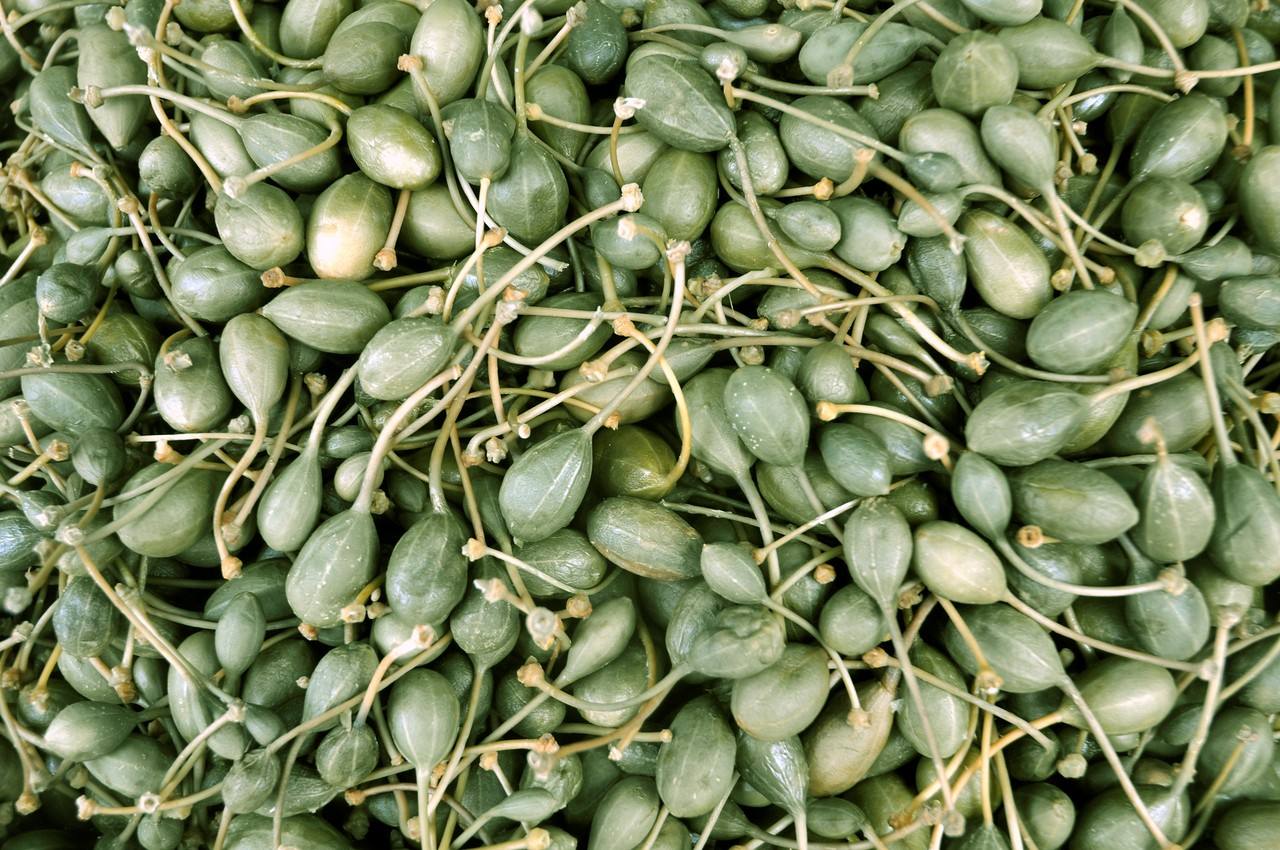
capers
Frequently Asked Questions About What Are Capers?
1. What are capers?
2. What are the different types of capers?
3. How can capers be used in cooking?
4. What distinguishes capers from caper berries?
5. What's the difference between fresh and pickled capers?
6. What dishes pair well with capers?
References
Detailed Introduction to Capers' Food
